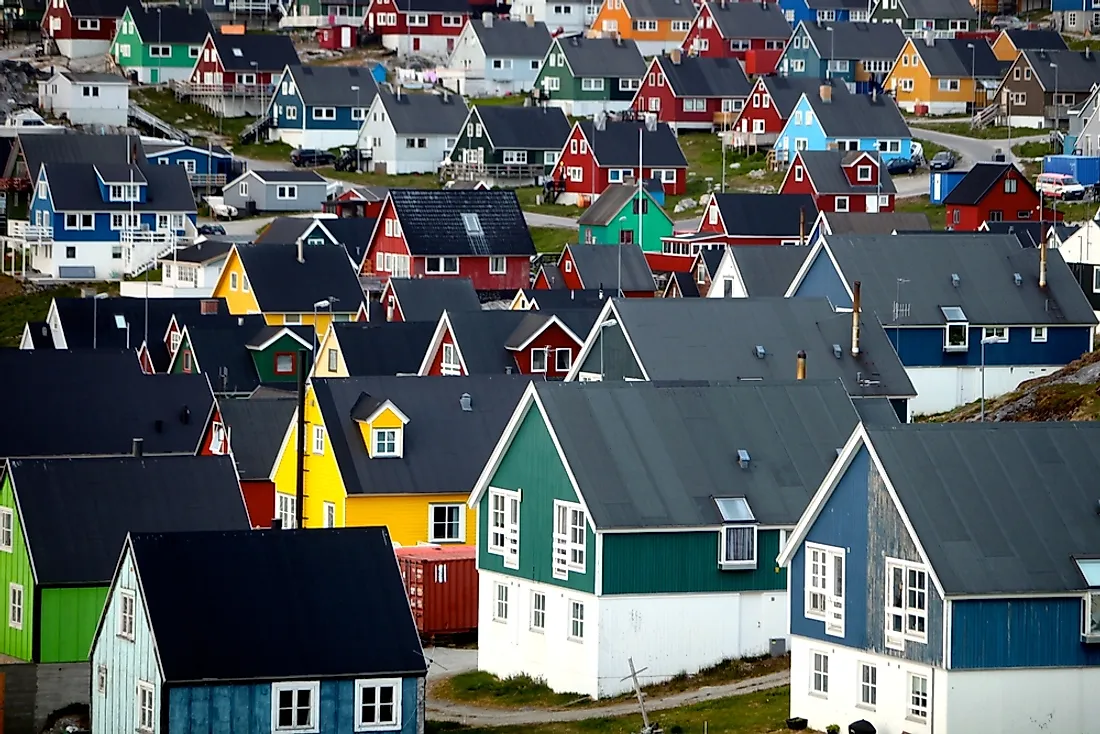What Is The Capital Of Greenland?

Greenland is a self-governing constituent country of Denmark located between the Atlantic and the Arctic oceans. Although it is physio-graphically part of North America, it is culturally and politically associated with the continent of Europe.
Greenland is the largest island in the world. About 75% of the total area is covered in a permanent out sheet. It has a population of approximately 56,000 people. The capital and largest city in Greenland is Nuuk. It accounts for over one-third of the country’s population. Nuuk is also the seat of government and the country’s largest economic and cultural center.
Brief History of Nuuk
The area where the city of Nuuk is was first inhabited by the Paleo-Eskimo people around 2200 BC. They lived around the now abandoned settlements of Qoornoq and disappeared from the area around AD 1000. Later, the Viking explorers settled in the area in the 10th century. Shortly after, the Inuit people arrived in the region alongside the Norsemen who disappeared around the 15th century. The city of Nuuk was founded in 1928 by royal governor Claus Paarss as fort of Godt-Haab, following the relocation of the Hope Colony to the mainland from Kangeq Island. During this time, Greenland was still a colony of the Danish. In 1733 and 1734, a smallpox outbreak in the area killed most of the local population, significantly reducing its population. Godt-Haab became the seat of government for South Greenland while the capital of Northern Greenland was Godhavn (now known as Qeqertarsuaq until 1940. In 1747, the Moravian Brethren Mission House was constructed in the area which later became the nucleus for Nuuk as several Greenlanders left their station to live at the mission station. The city changed its name to Nuuk on May 1, 1979, after the Countryside Council was abolished. Today, the city is populated by both the Danes and Inuit with over 30% of the population of Greenland living there
Geography and Climate
The City of Nuuk is situated at the mouth of Nuup Kangerlua, some 6.2 miles from the Labrador Sea and 150 miles south of the Arctic Circle. Near the city is the Sermitsiaq located in North-east Nuuk and can be seen from almost everywhere in the city. Also closer to Nuuk are the peaks of Lille Malene and Store Malene. The city’s climate can be described as tundra and is characterized by long, cold, snowy winter and short, cool summer. December 22 of every year has the shortest day and the longest, with the sun rising at 1030 hours and setting at 1420 hours. June 21 has the longest day and shortest night with the sun rising at 0300 hours and setting at midnight.
Demographics
Nuuk is the largest city in Greenland, accounting for over one-third of the population. As of January 2019, it had a population of about 18,000 people. The city’s population has more than doubled since 1977 and increased by about 20% since 2000. Nuuk has also attracted a number of immigrants by the good employment opportunity and better pay. The city has the highest number of Danes in Greenland.











